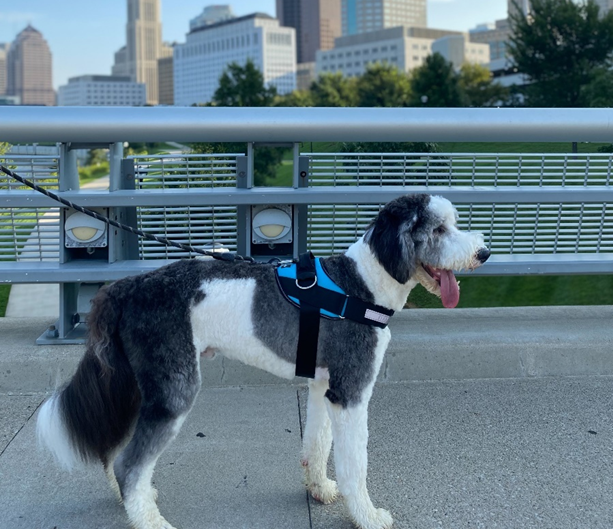5 Tips for Training Your Dog to Walk on a Leash Without Pulling
Walking your dog should be an enjoyable and relaxing activity for both you and your furry friend. However, if your dog pulls on the leash, what should be a peaceful stroll can quickly become a frustrating and exhausting task. The good news is that with the right approach and tools, you can train your dog to walk calmly by your side without pulling. In this blog post, we’ll share five essential tips to help you and your dog master leash walking, and we’ll introduce a product that can make the process even smoother.
1. Start with the Right Equipment
Before you begin training your dog to walk on a leash without pulling, it’s crucial to have the right equipment. The type of leash and harness you use can significantly impact your training success. Many dog owners start with a standard collar and leash, but these can actually encourage pulling and lead to choking or discomfort for your dog.
Tip: Instead of a collar, opt for a no-pull harness. A no-pull harness is designed to distribute pressure more evenly across your dog’s body, reducing the risk of injury and making it easier to guide your dog without force. Our favorite no-pull harness is the ShawnCo Essential Harness as it features three different leash attachment points, allowing you to find the best option for controlling your dog’s movements. Its no-pull technology discourages pulling, making your walks more enjoyable and safe.
2. Use Positive Reinforcement
Positive reinforcement is one of the most effective training methods when it comes to teaching your dog good behavior. This involves rewarding your dog with treats, praise, or affection whenever they walk calmly by your side without pulling on the leash. The idea is to make your dog associate walking politely with positive outcomes.
Tip: Whenever your dog starts to pull, stop walking immediately. Wait for your dog to return to your side, then reward them with a treat or praise. Over time, your dog will learn that staying by your side is the best way to earn rewards.
Transitioning from a collar to a harness can also make positive reinforcement more effective. With a no-pull harness, your dog will be more comfortable and less likely to become frustrated or anxious during training. This comfort can lead to a more relaxed and receptive dog during training sessions.
3. Practice Patience and Consistency
Training your dog to walk on a leash without pulling requires patience and consistency. It’s important to remember that behavior change doesn’t happen overnight. Some dogs may take longer to learn, especially if they’ve been pulling on the leash for a long time. The key is to stay consistent with your training methods and practice regularly.
Tip: Start with short training sessions and gradually increase the length of your walks as your dog improves. Consistency is crucial—make sure everyone who walks your dog uses the same commands and techniques to avoid confusing your dog. Over time, your dog will begin to understand what’s expected of them and will be more likely to walk calmly by your side.
4. Introduce Distractions Gradually
Once your dog is comfortable walking by your side in a quiet environment, it’s time to introduce distractions. Real-world walks are full of exciting sights, sounds, and smells that can tempt your dog to pull on the leash. To ensure your dog can walk calmly in any situation, it’s important to practice in different environments with varying levels of distraction.
Tip: Start by practicing in your backyard or a quiet park, then gradually move to busier areas as your dog becomes more confident. If your dog begins to pull when distracted, use the same stop-and-reward technique as before. Consistent practice in different settings will help your dog learn to stay focused and walk politely, no matter what’s happening around them.
5. Make Walking a Positive Experience
Walking should be a positive experience for both you and your dog. If your dog associates walking with tension or discomfort, they’re more likely to pull or resist. That’s why it’s important to create a calm and enjoyable atmosphere during your walks.
Tip: Keep your walks fun and engaging by allowing your dog to explore and sniff their surroundings (within reason). Use a cheerful tone of voice and praise your dog frequently for good behavior. If your dog starts to pull, remain calm and use the techniques you’ve practiced. Remember, walking should be a bonding experience, not a battle.
Using the right equipment can play a big role in making walks enjoyable. The [product] is designed to provide comfort and ease of use, making it simple to put on and take off in under three seconds. This ease of use means you can spend less time fussing with equipment and more time enjoying quality time with your dog. Whether you’re going for a quick stroll or an extended hike, the [product] is built to handle it all, making it an essential tool for any dog owner.
Conclusion:
Training your dog to walk on a leash without pulling takes time, patience, and the right tools. By following these tips and investing in a quality no-pull harness, you can transform your daily walks into a positive and stress-free experience.



